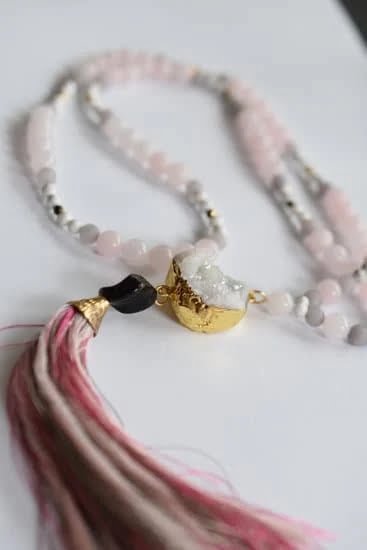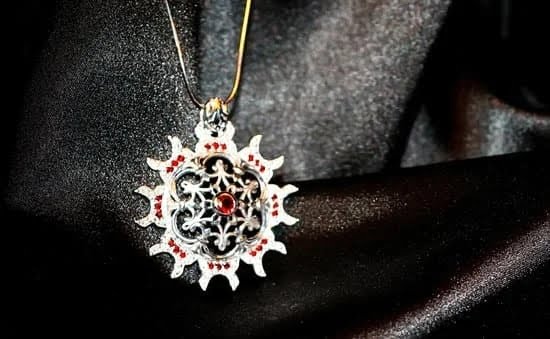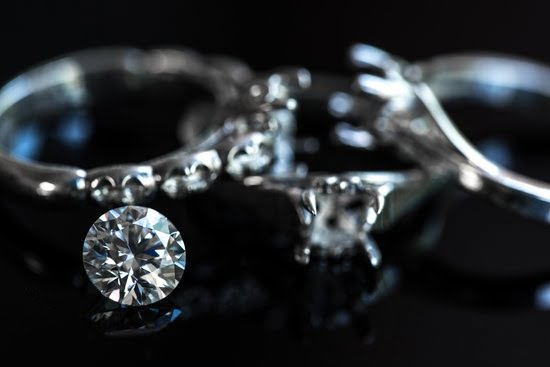Introduction
Jewelry made of gold has been prized and highly valued since ancient civilizations. It was associated with royalty and the gods and goddesses of various religious beliefs. Today, gold is still a symbol of wealth, status, and beauty. Its sparkle and luster has captivated people for ages.
Gold jewelry can be crafted into a variety of designs from classic to contemporary, simple to complex pieces. It is durable, hypoallergenic and its hue does not fade over time making it desirable in many cultures. Gold often serves as an investment as its value appreciates over time, making it attractive to investors who wish to have a tangible asset that retains its value. Additionally, it is seen as a sign of luxuriousness and quality for fine jewelry pieces that are made in craftsmanship by master artisans using traditional methods passed down through generations in some parts of the world.
The exact amount of gold used in jewelry depends on what type of item is being crafted as there can be considerable differences between pieces including weights and solidity ratios determined by their karats or fineness ratings (amounts of pure gold mixed with metal alloys). Generally however, much more metal alloy than pure gold go into the making of certain types of jewelry such as cheap fashion items where cost is the main selling point while more precious custom designed items require higher gold content levels up to 24k purity depending on individual design needs.
History of Gold in Jewelry
Gold has been used in jewelry as far back as ancient Egypt. It has long been valued for its beauty and its durability, and representing wealth, status, and power. The oldest surviving pieces of jewelry made out of gold date back over 5000 years, across multiple cultures such as ancient Europe, the Middle East, North and South America.
In Ancient Greece and Rome, it was believed that gold could communicate with the gods and had healing powers so they would craft jewelry out of gold to honor them or ward off evil spirits. During this time period wearing gold also provided a level of protection from potential enemies since it symbolized wealth and status. In Ancient China gold signified good luck and was seen as a symbol of joyous occasions; people would often wear it for special ceremonies around birthdays or marriages.
Throughout human history gold has served both practical and spiritual purposes by being used to craft intricate designs for clothing embellishments, sacred objects like monstrances in churches, symobols on coins & shields to boost morale in battle , and intricate pieces of jewelry for both personal adornment & gifts. For many people even today the value of golden jewelry is still seen solely on economic terms but for some those items hold symbolic meaning regarding events like holidays seperating them from just monetary exchange.
Types of Gold Alloys Used
10K gold alloy is an alloy containing 10 parts gold and 14 parts other metals such as copper, zinc, nickel, and silver. 10K gold alloy has the lowest level of purity among all the types of gold used for jewelry-making and it is usually not used for bracelets or plates as it dives relatively easily. This type of gold is considered to be the most durable and best value for money since it isn’t too soft and doesn’t require a high level of maintenance.
14K gold alloy contains 14 parts gold with 10 parts other metals such as copper, zinc, nickel, silver etc. This type of gold alloy has higher levels of purity than 10K and therefore is often used for more elaborate pieces like rings, necklaces and earrings due to its resistance to wear.
18K gold alloy contains 18 parts gold with 6 parts other metals such as copper, zinc, nickel, silver etc. This type of alloy usually has a rich yellow color making it ideal for use in items like wedding bands or traditional jewelry styles. Due to its softness this type of gold requires much more maintenance than either 10K or 14K but remains popular due to its incredible shine once polished.
24K gold alloy contains 24 parts pure gold without any other metal making up the remainder. As this purest form of gold has no additives it makes it incredibly soft meaning that pieces made from 24k are rarely seen as bracelets or chains since they tends to dent very easily. It’s best-used in coin collections due to its high luster once polished.
Gold Processing
Gold is often the preferred metal for making jewelry, due to its beauty and strength. To fashion raw gold into a piece of jewelry, it must go through four steps: melting, casting, forming and polishing.
Melting: During the melting process, gold jewellery is melted at high temperatures typically between 1,000 and 2,000 degrees Fahrenheit using a torch or electric furnace. Purity of gold can be increased by removing unwanted impurities such as silver and copper during the melting process.
Casting: The molten gold is then poured into casts made of various molds such as flat sheets or solid bars. Depending on what kind of design the craftsman wants to achieve, different shapes may require other forms of casting techniques like vacuum pressure molding and centrifugal molding.
Forming: After the molten gold has cooled down in its molds, pieces are cut out and flattened through techniques such as hammering or stamping with special tools if needed. Slabs are cut up into smaller pieces that can be designed for customized necklaces and rings. Jewellery shaping machines like bending machines or twisting machines may be used to give jewellery its final shape.
Polishing: This stage involves sandblasting parts to smoothen them before gluing them together or soldering them together with a very thin welding wire or brazing alloy wires that have been filled with an exact amount of solder paste which will eventually form an extremely strong join after cooling down quickly under specialized equipment designed for this purpose too like kilns or torches depending on the size of the pieces being joined together – small detailed areas are normally done with a hand-held torch while bigger joins may require more powerful furnaces often seen in professional jewelry fabrication workshops. Finally all remaining internal defects are removed using manual honing along with other special polishing finishing operations like lapping and buffing until desired surface glossiness is achieved before they get shipped out of the store
Gold Purity and Certification
Gold purity testing is the process of determining how much pure gold is present in a particular item. The most common method for determining gold purity is called the Karat System. This system categorizes gold based on its content of pure gold, measured in fractions and expressed as parts per 24 (in other words, 24 part totals represent a 100% piece). To accurately determine the value of a piece of jewelry, it must undergo both gold purity and certification tests.
Gold certification testing assesses the quality, weight and design of an item to ensure it meets specific manufacturing standards. In some countries, government officials may assess an item to issue a formal certificate confirming that it adheres to national standards. Alternatively, Thi Certificates of Analysis can be issued by private labs after they analyze an item. Accurately testing and certifying pieces of jewelry is essential in order to guarantee accurate weights, measurements and values when purchasing or trading items made with gold.
Creative Uses of Gold in Jewelry
Gold has been used in jewelry making, often combined with precious and semi-precious materials, since ancient times. Today, artisans worldwide continue to innovate by creating entirely new types of pieces using gold. For instance, goldsmiths are adept at manipulating the soft metal into fine filigree works of art that thread around and compliment precious stones like diamonds and sapphires. Gold thread is also used to create intricate patterns and textures on the surface of rings or necklaces. One technique known as Mokume-gane involves layering different colors of gold with other metals such as silver or palladium to create distinct patterns, giving each piece an unmistakable character. Gold can also be used in nonstandard forms such as nuggets, beads and powder and combined with objects like wood grains or crystals to make truly unique pieces of jewelry that range from edgy to elegant.
Investment Potential of Gold Jewelry
Gold has become much more than just a beautiful piece of jewelry over the years. As with stocks, bonds, and other investments, gold jewelry offers potential for economic gain and can be used as a hedge against inflation. Gold jewelry is particularly attractive because it provides a tangible form of investment separate from stocks, bonds, or digital currencies. In times of market turmoil or an impending recession, gold jewelry may become a more reliable asset to turn to as it is generally known to keep its value throughout time.
In addition to its potential to increase in value, gold jewelry also carries symbolic meaning that makes it both an aesthetic and heirloom item. While owning a physical gold bar would require storage safety measures, owning gold jewelry makes it easy for someone to store value as well as keep or pass down as family heirlooms. Its beauty encourages people to wear it on special occasions or even everyday depending on the design. This makes gold even more attractive since owners not only accumulate wealth but also have access to fashion.
Overall, investing in gold jewelry can help diversify an investor’s portfolio while providing unique benefits like portability, fashionability, and realizable gains versus storing funds in cash form.
Conclusion
This blog post provided a brief overview of how much gold goes into jewelry. On average, 14-karat jewelry contains 58.3% pure gold and the remainder is made up of an alloy. The higher the karat count, the more gold content in the jewelry, with 24 karats containing 99.9% pure gold. Gold is highly malleable and can be crafted into many shapes and sizes with intricate craftsmanship suitable for many types of jewelry pieces. In addition to its aesthetic value, gold is incredibly resilient, non-corrosive, and holds its color under ultraviolet light—making it an ideal choice for jewelry that stands the test of time. With its high intrinsic value, abundant durability, and countless styling possibilities, gold truly makes a treasured addition to any wardrobe that will last for years to come.

Welcome to my jewelry blog! My name is Sarah and I am the owner of this blog.
I love making jewelry and sharing my creations with others.
So whether you’re someone who loves wearing jewelry yourself or simply enjoys learning about it, be sure to check out my blog for insightful posts on everything related to this exciting topic!





